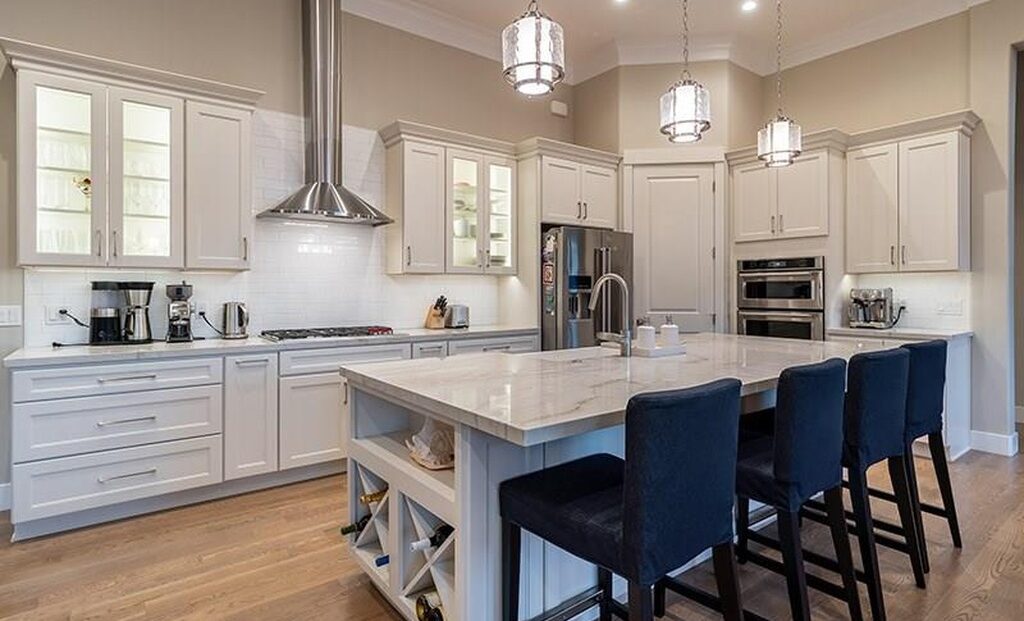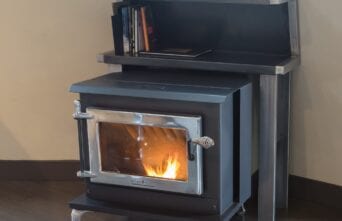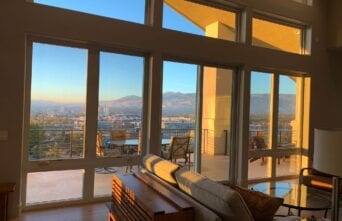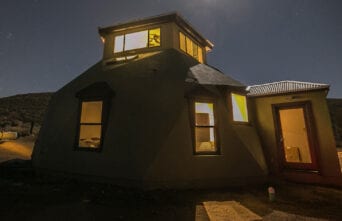Solid Surface Counter Top Basics

Most of my clients are surprised to learn that a natural stone counter top can often be less expensive than tile counter tops. The reasons for this are that while material costs have come down, labor to fabricate the stone has also come down. Some shops have very sophisticated water laser cutting equipment. Other shops that are cutting by hand have had to bring their costs way down to compete for the limited amount of work that had been available over the last few years. However, I believe that we will be seeing prices inch back up due to the recent surge in remodel work being done in the US.

Tile counter tops not only require a lot of labor, but the special tiles for the edge are also crazy expensive compared to the plain edge kind. In case you’re interested, the front edge tile is called “V Cap”. A “bullnose” or finished edge tile can be used as well.
Edges for solid surfaces are a bit trickier to explain. Commonly, slabs, whether natural or

man-made, come in two thicknesses, 2 cm (centimeter) or 3cm. The 3cm is thick enough to put on top of the counter top without needing any plywood between the top of the cabinet and the bottom of the slab to support the weight. That saves minimal cost. The stone is 50% thicker so it will cost approximately 50% more per square foot. I’ve been seeing that many of the home improvement stores as well as the big box chain Costco now sell only the 3cm counter tops. Because of the thickness, the edge is finished, as is.
When searching the web for “granite edge profiles”, you’ll find a lot of information so I’m not going to address that here. What I would like to address is the difference in the two types of styles so that when you’re talking to your contractor, designer, or home improvement sales person, you will know the difference

and know what questions to ask. At right, you’ll see an edge detail chart
to help explain. All of the drawings that have a dotted line are created with 2cm thickness stone. If two pieces of stone are glued together, it is called a lamination. The lamination will be twice as thick as the slab. For example, if your slab is 2cm, then the edge of the counter will be 4cm thick. Still with me?
The reason this is done is to give the counter a thicker, richer, look and cover up the very top of the cabinets. The end costs for a 3cm counter finished and a 2cm laminated should be about the same for the consumer if one of the more simple edge details, like square (sometimes called flat polished), bullnose or double bevel is used.

In the Western US where I have worked, 2cm counters with a laminated edge have been the norm, but since the invasion of national chain stores, we’re seeing a lot more 3cm slabs. I am suspecting that the reason is because their mark-up is bigger with the stone coming from cheap labor markets like China. If anyone reading this has information to the contrary, I’m all ears! Recently, I was helping with a kitchen remodel in the Boston area. I found it very interesting to learn that 2 cm slabs are very hard to find there.
A word about “Pre-fab”slabs:
Fairly new on the scene are semi-finished counter tops called a “pre-fab” slab. The crates of these tops that I have seen are manufactured in China. They come with only the front edge finished, one or both sides finished, or all four sides finished for islands. They can be very cost effective for the perfect situation, and that’s the catch. If your kitchen or bathroom has a corner where the stone top wraps around, it will be impossible to get the two sides of the stone to

“butterfly” match. In those situations, the corner, or seam where the two pieces of stone come together can look terrible. A good quality fabricator uses a full slab of material to create a perfect match. But if your kitchen is what is called a “galley” kitchen with straight counters that stop at the end of the cabinet run, a wall, or refrigerator, pre-fabs can be a big cost savings. Edge details are limited. I’ve seen them in the standard bullnose, or flat polished for a more contemporary look.
How a fabricator matches their seams on the top or the laminated edge can make all the difference in any home where natural stone counter tops are being used. It’s where I can always tell that someone has gotten a “deal” on their counters!
And FYI- Man-made materials also come from their manufacturers in slabs, 2cm or 3cm.
After looking at the photos I’ve inserted, I am very interested to know what you think. Do you have a preference for the laminated edge look or the single layer look better? What’s the norm in your area?


